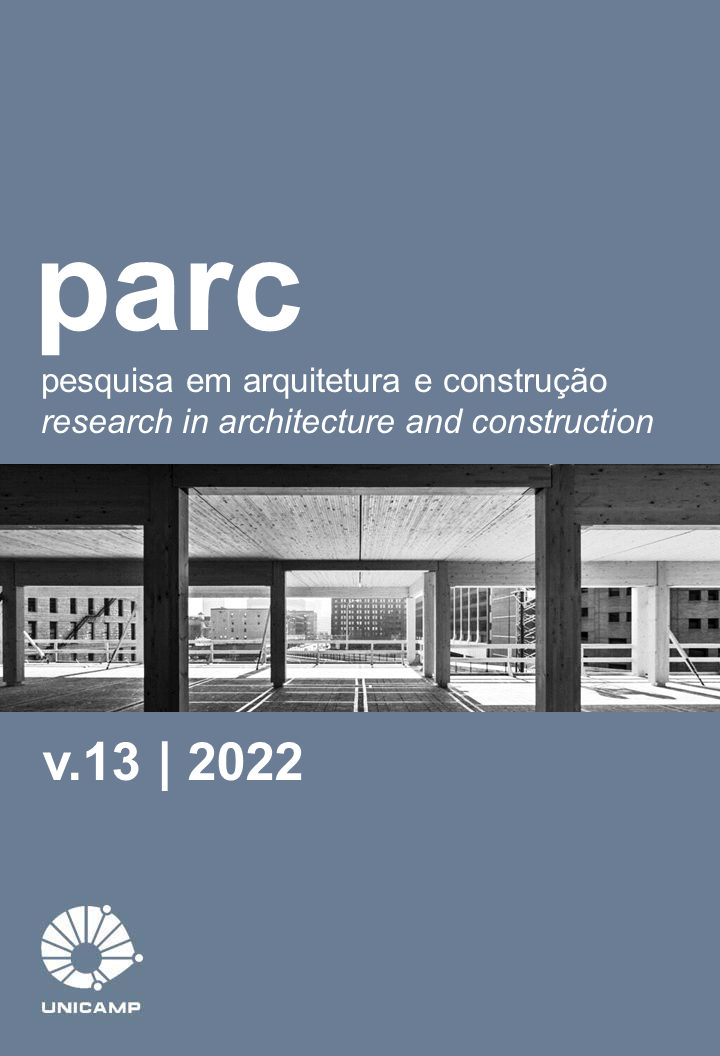Abstract
In addition to human visual and aesthetic comfort, daylight plays an important role in electricity consumption, as it allows replacing the use of artificial light throughout the day. Currently, there is Dynamic Simulation using Digital Climate Files, which describes the typical annual characteristic of solar radiation availability in many places on the planet. This simulation uses the concept of Daylight Coefficient (DLC), which associates to certain portions of the sky the amount of light that reaches certain points in the environmental surface plans, allowing the estimation of daily/hourly availability of daylight during a typical year. The Radiosity Coefficient (CR) is proposed here, relating the initial illuminance of a certain portion of a surface plane in an inner environment with a Partial Illuminance that, after several inter-reflections, reaches other surface plane portions of the environment from that initial portion. The concept of Daylight Annual Estimate – DAE is presented through a proposal of a triple approach based on Radiosity and using the Radiosity Coefficient, the Daylight Coefficient in a version developed for Radiosity and the new Concept of Full Radiosity (RP). The latter uses integral cycles in the classical method, according to an analysis of the environment that determines which of the three methods is faster for the design’s circumstance. The three methods lead to the same EALN values, optimizing the study´s time and other advantages. Models simulated by the three methods at different degrees of resolution confirm the consistency and reliability of the approach, as shown in the results.
References
CIE. COMMISSION INTERNATIONALE DE L´ECLAIRAGE. Spatial Distribution of Daylight. CIE Standard General Sky: ISO 15469: 2004(E) / CIE S 011/E:2003. Vienna: CIE Central Bureau, 2004.
CLARO, A. Método para Determinação da Estimativa Anual de Luz Natural Utilizando o Modelo Vetorial Esférico para Radiosidade. 2015. 165 f. Tese (Concurso para Professor Titular) – Centro Tecnológico,Departamento de Arquitetura e Urbanismo. Universidade Federal de Santa Catarina, Florianópolis, 2015. Disponível em: https://repositorio.ufsc.br/bitstream/handle/123456789/136390/ANDERSON%20CLARO%20-%20TESE%20TITULAR%20UFSC%20OUTUBRO%202015.pdf?sequence=1&isAllowed=y Acesso em: 26 de jan. 2021.
CLARO, A. Modelo Vetorial Esférico para Radiosidade Aplicado à Iluminação Natural. 1998. 178 p. Tese (Doutorado em Engenharia de Produção) - Universidade Federal de Santa Catarina, Florianpolis,1998. http://repositorio.ufsc.br/xmlui/handle/123456789/77897. Acesso em 26 jan. 2021.
COHEN, M. F.; CHEN, S. E.; WALLACE, J. R; GREENBERG, D. P. A Progressive Refinement Approach to Fast Radiosity Image Generation. Computer Graphics, v.22, n.4, 1988, p. 75-84. Disponível em: http://www.cs.cmu.edu/afs/cs/academic/class/15462-f10/www/lec_slides/p75-cohen.pdf. Acesso em: 27 jan. 2021.
COHEN, M. F.; GREENBERG, D. P. The Hemi-Cube: a Radiosity Solution for Complex Environments. In: ACM SlGGRAPH Computer Graphics, v. 19, n. 3, p. 31-40, jul., 1985. DOI: https://doi.org/10.1145/325165.325171.
GEEBELEN, B. Daylighting Computation Methods - From Dot Chart to Digital Simulation. Syllabus Studiedag Daglichttoetreding in Gebouwen, Antwerpen: KVIV, 2003. Disponível em: https://lirias.kuleuven.be/bitstream/123456789/160607/1/kviv_geebelen.pdf%20-. Acesso em: 27 jan. 2021.
MORO, J.; KRUGER, E.; CLARO, A. Análise por meio de Simulação Computacional dos Sistemas de Iluminação do Edifício Sede do Tribunal de Contas do Paraná. In: ENCONTRO NACIONAL DE TECNOLOGIA NO AMBIENTE CONSTRUÍDO, 15., Maceió, 2014. Anais [...], Maceió: UFAL, 2014. DOI: http://doi.org/10.17012/entac2014.
PEREZ, R.; SEALS, R.; MICHALSKY, J. All-weather model for sky luminance distribution – Preliminary configuration and validation. Solar Energy, v. 50, n. 3, p 235-245. 1993.
TREGENZA, P. R. The Monte Carlo method in lighting calculations. Lighting Research and Technology. v.5, n. 4, p. 163-170. 1983. DOI: https://doi.org/10.1177/096032718301500401.
TREGENZA, P. R.; WATERS, I. Daylight coefficients. Lighting Research and Technology, v. 49, n. 7, p. 65-71. 1983. DOI: https://doi.org/10.1177/1477153516653786
WARD, G. J. The RADIANCE Lighting Simulation and Rendering System. Computer Graphics. In: SIGGRAPH’94, 1994, Orlando. Proceedings […]. Orlando: Association for Computing Machinery, 1994, p. 459-72. Disponível em: http://radsite.lbl.gov/radiance/papers/sg94.1/ . Acesso em 27 jan. 2021.
WHITTED, T. An Improved Illumination Model for Shaded Display Graphics and Image Processing. Communications of the ACM, New Jersey, v. 23, n. 6. 1980. DOI: https://doi.org/10.1145/358876.358882

This work is licensed under a Creative Commons Attribution 4.0 International License.
Copyright (c) 2022 PARC Pesquisa em Arquitetura e Construção


